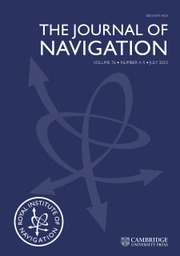No CrossRef data available.
Article contents
Missed detection probability evaluation for the RAIM based on worst-case fault magnitude searching
Published online by Cambridge University Press: 25 October 2024
Abstract
Missed detection probability is a critical metric for the integrity performance of receiver autonomous integrity monitoring (RAIM) in the presence of faults. The traditional missed detection probability evaluation method for RAIM is limited by impractical time consumption because of the absence of accurate searching interval for the magnitude of a worst-case fault. To address this issue, the searching interval for the magnitude of a worst-case fault is constructed by the combination of minimum detectable magnitude and minimum hazardous magnitude, and the searching interval adjustment is designed to avoid the absence of worst-case fault magnitude so that the maximum missed detection probability can be accurately evaluated. The simulation result indicates that the proposed method can achieve higher accuracy for the worst-case fault magnitude searching. Furthermore, the accuracy of worldwide evaluated missed detection rate can achieve an improvement of 57·66% at most by the proposed method for the different classical RAIM algorithms.
- Type
- Research Article
- Information
- Copyright
- Copyright © The Author(s), 2024. Published by Cambridge University Press on behalf of The Royal Institute of Navigation



